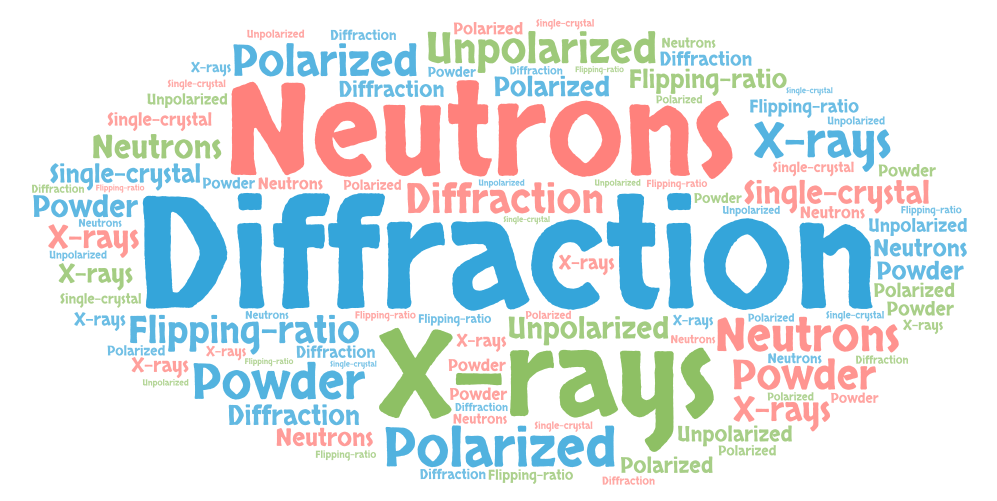2. Getting Started
2.1. Installing easyDiffraction
2.2. Launching easyDiffraction
2.3. Uninstalling easyDiffraction
3. How to Use
3.1. easyDiffraction user interface
3.1.1. Toolbar
3.1.2. Main window
3.1.3. Sidebar
3.1.4. Settings
3.2. easyDiffraction project files
3.2.1. Unpolarized diffraction
3.2.2. Polarized diffraction
3.3. Data analysis workflow
3.3.1. Home page
3.3.2. Create/Open project
3.3.3. Define sample model
3.3.4. Load experimental data
3.3.5. Perform data analysis
3.3.6. Generate summary report
1. Introduction
easyDiffraction is a scientific software for modelling and analysis of neutron diffraction data. We have just started to work on this project, so easyDiffraction is available as a prototype, covering classical 1D polarized and unpolarized neutron powder diffraction data collected at a constant wavelength.
1.1. What is easyDiffraction for?
- easyDiffraction allows simulation of diffraction patterns based on a structural model and refinement of its parameters.
- easyDiffraction is similar to crystallographic programs like FullProf, Jana, GSAS, ShelX, etc.
- In contrast to the programs mentioned above easyDiffraction, is based on external crystallographic libraries, such as CrysPy in order to cover different functionality aspects within a single intuitive and user-friendly graphical interface. In near future we plan to add support for CrysFML, another crystallographic library.
